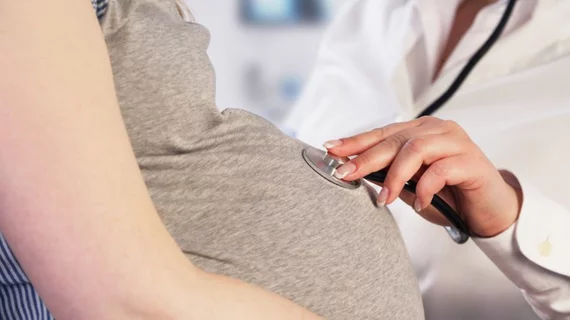Women who suffer from peripartum cardiomyopathy (PPCM) will likely be clinically asymptomatic seven years after they give birth, according to research published in the Journal of the American Heart Association Oct. 3—but it’s also likely they’ll develop enduring diastolic dysfunction and reduced exercise capacity in the same window.
Peripartum cardiomyopathy, defined as idiopathic heart failure with left ventricular ejection fraction (LVEF) below 45 percent in late pregnancy or soon after childbirth, affects women without a history of heart disease, first author Anne S. Ersbøll, MD, PhD, and colleagues in Copenhagen, Denmark, wrote in JAHA. It’s been linked in the past to hypertensive disorders of pregnancy (HDP), like chronic hypertension and preeclampsia, but a paucity of research on the subject has left scientists with little information on the progression and outcomes of PPCM.
“Higher sFlt-1 (soluble Fms-like tyrosine kinase) levels seem to correlate with severity of both preeclampsia and PPCM, and echocardiographic studies have also demonstrated subclinical cardiac dysfunction in women with preeclampsia, leading to the hypothesis that preeclampsia and PPCM represent a spectrum of disease,” Ersbøll, of the Center for Pregnancy and Heart Disease and Department of Obstetrics at Copenhagen University Hospital, and co-authors said. “Some PPCM studies have reported better 6- to 12-month outcomes associated with concomitant HDP, but the clinical and prognostic implications of concomitant HDP are not clear.”
Ersbøll and her team invited all women diagnosed with PPCM between 2005 and 2014 in Denmark to participate in their clinical follow-up study, which aimed to measure systolic and diastolic cardiac function and exercise capacity in the women. Heart function was assessed with cardiac MRI; exercise capacity, defined as peak oxygen consumption (VO2), was measured during maximal exercise testing.
Women with PPCM were compared to two age-matched cohorts: one group of women with previous preeclampsia and another who’d experienced uncomplicated pregnancies.
A total of 84 women—28 in each group—participated in the trial. After an average follow-up of 91 months, the majority of patients in the PPCM cohort said they hadn’t experienced any heart failure symptoms. Mean ventricular LVEF was normal in those patients at 62 percent, but it was significantly lower than that of preeclamptic patients (69 percent) and those with uncomplicated pregnancies (67 percent).
Women who’d experienced peripartum cardiomyopathy also exhibited reduced diastolic function as shown on MRI, with decreased left ventricular peak filling rate, left atrial passive emptying volume and left atrial passive emptying fraction. PPCM was also identified as a predictor of lower maximal exercise capacity, as was a high BMI and low LVEF.
“In our study, subtle diastolic dysfunction was present in the setting of LVEF recovery,” Ersbøll et al. wrote. “Residual myocardial injury correlating modestly with sFlt-1 levels have been described previously. Whether persistent diastolic dysfunction as assessed by cardiac MRI is related to sFlt-1 and other biomarkers associated with PPCM and HDP is currently unknown.”
The authors said women with a history of PPCM could expect to recover regular LVEF and be free of PPCM symptoms seven years after their diagnosis, but other consequences of the condition might persist.
“Despite a symptomatic recovery, some degree of cardiac dysfunction might persist or relapse late after peripartum cardiomyopathy,” they wrote. “Whether this is useful to predict the risk of subsequent recurrence of heart failure remains unknown and should be explored in future studies of long-term outcome.”

